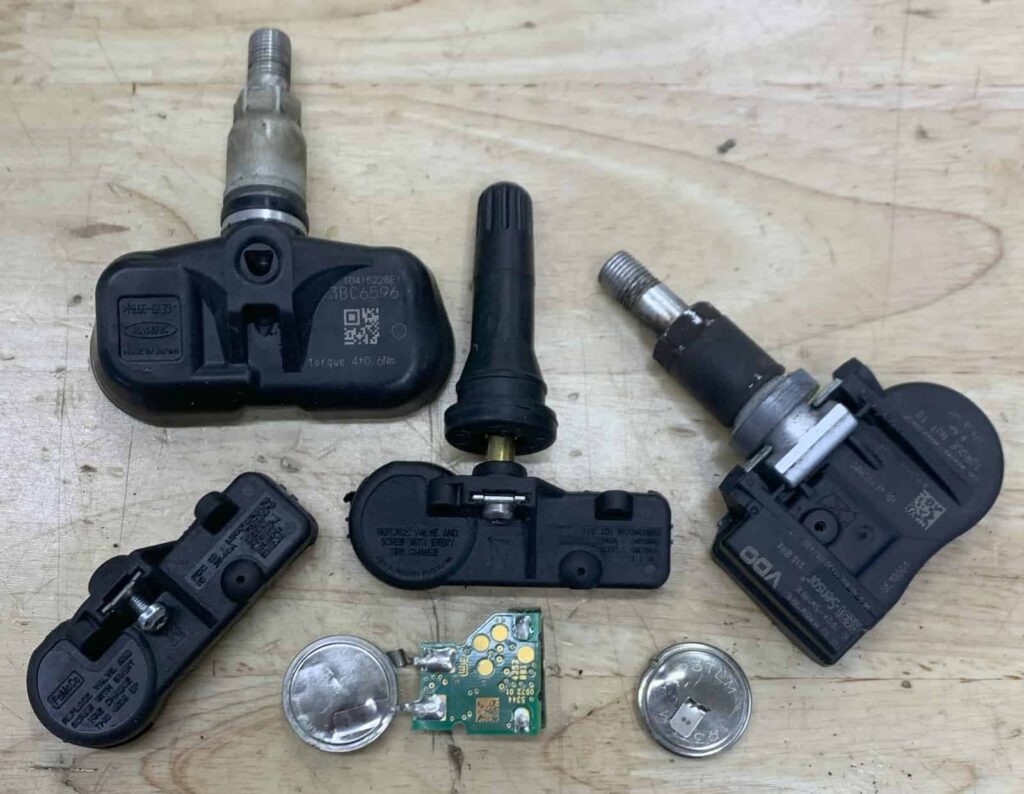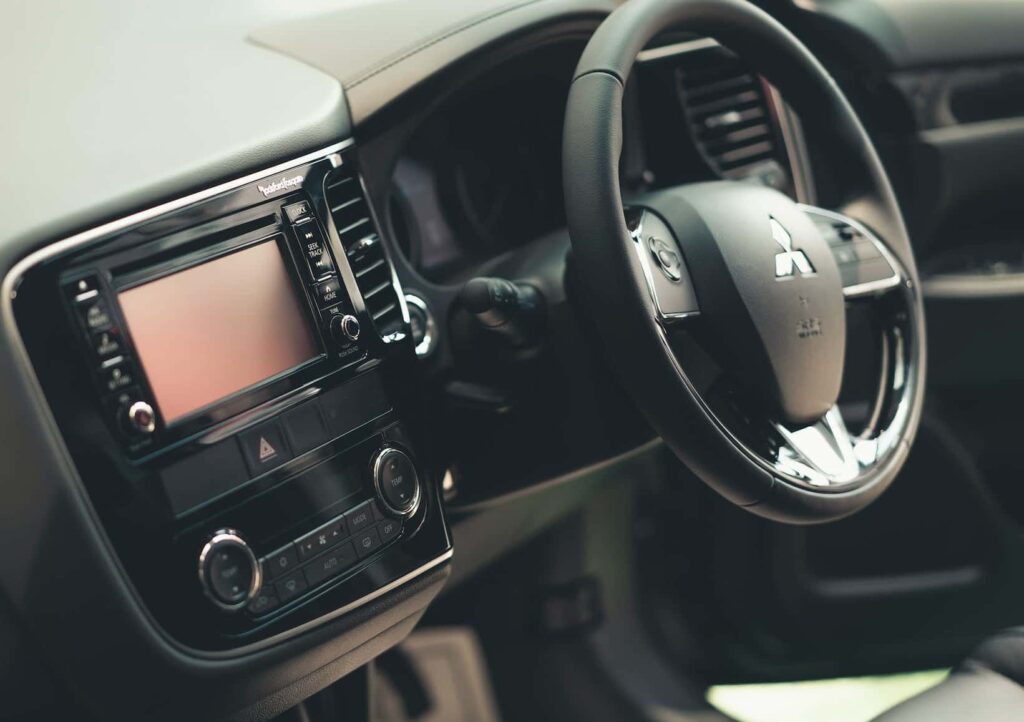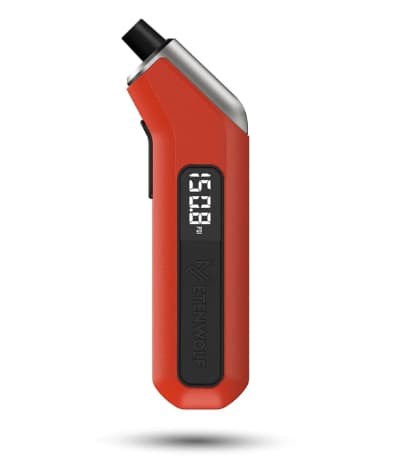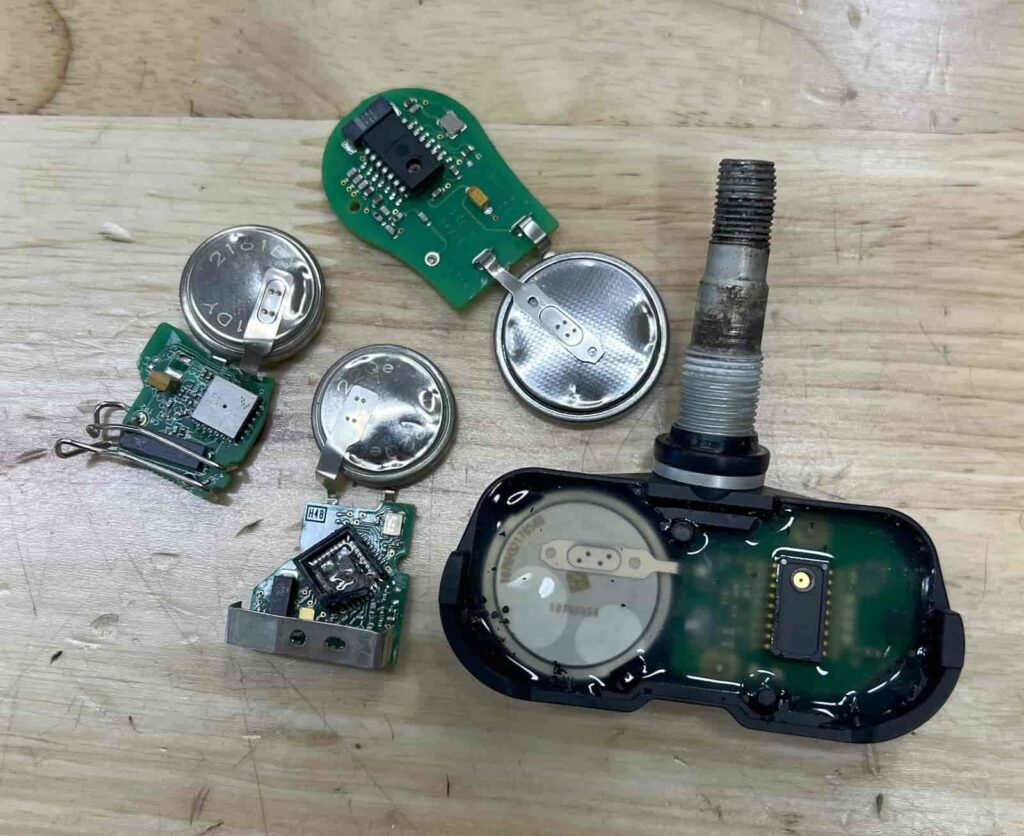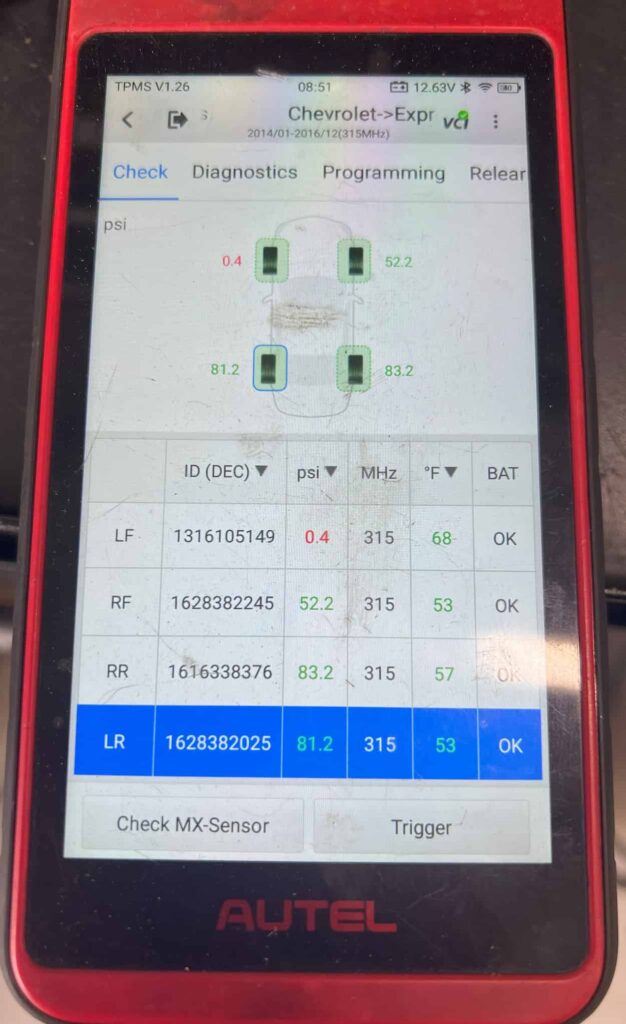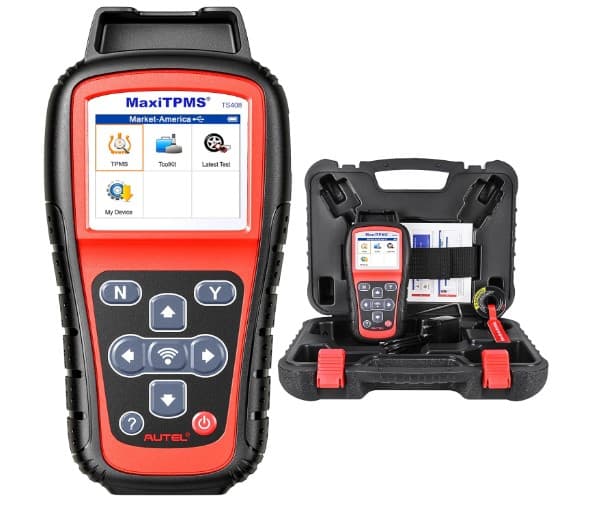How to Reset Mitsubishi Outlander Tire Pressure System
Fill all 4 tires to the recommended air pressures when the tires are cold.
Turn the Mitsubishi Outlander engine On and put the parking brake on.
Turn the Engine Off.
Press the START button twice without turning the engine on.
Press the MENU button on the left side of the steering wheel until the SETTINGS MENU is displayed on the information display screen.
Hold Down the MENU button.
Press the MENU button to scroll down on the information display screen until the tire pressure RESET text is highlighted.
Hold down the MENU button until you hear a beep.
Let go of the MENU button.
Press the ignition start button to turn off the vehicle.
Start the Mitsubishi Outlander and drive it for 5 minutes at speeds exceeding 30 kph.
What is TPMS?
TPMS stands for tire pressure monitoring system. The Mitsubishi Outlander TPMS is the system that governs the air pressure of each tire and alerts the driver when air pressure is low in a tire or when there’s an issue with the system itself.
How Does the Mitsubishi Outlander Tire Pressure System Work?
The Mitsubishi Outlander TPMS is made up of 3 main components:
TIRE PRESSURE SENSORS
TPMS RECEIVER MODULE
MITSUBISHI OUTLANDER ECU
Mitsubishi Outlander Tire Pressure Sensors
Every tire on the Mitsubishi Outlander features a tire pressure sensor encased in a plastic shell. This encasement is fixed to the end of the tire valve stem, situated within the tire. The sensor inside this casing comprises a microchip, a battery, and a radio transmitter. The microchip, energized by the battery, monitors the tire’s internal air pressure and temperature. The collected data is sent via radio signals (at either 315 MHz or 433 MHz) to the Mitsubishi Outlander TPMS receiver module.
Mitsubishi Outlander TPMS Receiver Module
The Mitsubishi Outlander tire pressure monitoring system receiver module collects air pressure data from the sensors located in each tire. This data is subsequently transmitted to the vehicle’s central computer, referred to as either the Engine Control Unit (ECU) or Body Control Module (BCM).
Mitsubishi Outlander ECU
Within the Mitsubishi Outlander the Engine Control Unit (ECU) analyzes the tire pressure information it obtains, comparing it with the air pressure benchmarks set by Mitsubishi. If the ECU identifies that the pressure in a tire falls more than 75% below the recommended tire pressure level, it triggers a low tire pressure warning on the Mitsubishi Outlander information display screen.
Mitsubishi Outlander Tire Pressure and Wheel Size
TIRE SIZE | Front Psi/kPa | Rear Psi/kPa |
255/50R20 | 38/260 | 42/290 |
265/40R22 | 38/260 | 42/290 |
Why is the Mitsubishi Outlander Tire Pressure Indicator Light Flashing?
A flashing tire pressure indicator on the Mitsubishi Outlander signals a malfunction in the tire pressure monitoring system itself, not a low tire pressure issue. This problem typically stems from communication failures between one or more tire pressure sensors and the Mitsubishi Outlander TPMS module or the main computer systems (ECU). Common causes for these problems include:
The battery in a tire pressure sensor being low or exhausted, necessitating a replacement of the sensor.
Potential damage to a sensor, particularly following the installation of new tires or wheels.
External radio frequency interference from nearby vehicles or electronic devices that may affect the sensors or the TPMS module.
Installation of non-standard or unapproved tire pressure sensors or TPMS modules in the Mitsubishi Outlander.
Driving the Mitsubishi Outlander with a wheel that is missing a tire pressure sensor, such as a spare tire.
What Can Trigger the Tire Light in a Mitsubishi Outlander?
Excessively high or low tire pressure.
TPMS sensor battery depletion or failure.
Malfunctions in the TPMS receiver module, ECU/BCM, including software updates or glitches.
Interference from external radio frequencies from surrounding vehicles or electronic gadgets.
Decrease in ambient air temperature.
Overburdening the Mitsubishi Outlander past its maximum weight limit or exceeding towing capacities.
Utilization of tire chains on tires.
Excessive tinting of vehicle windows.
Variations in road surface temperatures.
Damage to TPMS sensors during tire replacement or tire-related servicing.
Neglecting the recalibration of the Mitsubishi Outlander TPMS post tire inflation or service.
Physical harm to tires or wheels, such as cuts, deformations, or damage to the rim.
Incorrect installation or malfunction of tire valve stems.
Can a Change in Weather Trigger the Mitsubishi Outlander Tire Light?
Weather fluctuations often activate the Mitsubishi Outlander low tire pressure alert. Tire pressure typically varies by approximately 1 psi (6.8 kPa) for every 10°F (around -12°C) change in air temperature. For example, a 42°F decrease in temperature over the course of a month might lower the tire air pressure from 35 psi (240 kPa) to 30 psi (206 kPa) or below will cause the Mitsubishi Outlander low tire alert to turn on.
Tire Inflation
Underinflation
Operating the Mitsubishi Outlander with underinflated tires can result in multiple issues. Such a scenario not only increases fuel consumption but also accelerates wear along the tire treads’ outer edges. Furthermore, tires with low pressure negatively impact the SUV’s handling, braking efficiency, and overall safety.
Overinflation
Driving the Mitsubishi Outlander with tires that are overinflated can lead to a less comfortable driving experience and cause the tire tread to wear down predominantly in the center, rather than evenly across the entire tread area.
Cold Tires
The tire pressure of the Mitsubishi Outlander should be inspected and adjusted when the tires are cold, usually before operating the SUV or after it has been stationary for a minimum of 3 hours after its last journey.
Hot Tires
The tires of your Mitsubishi Outlander warm up after driving, causing the air pressure to rise by about 30-40 kPa (4-5 psi) in each tire. Consequently, adjusting the tire pressure when the tires are warm will lead to overinflation.
Mitsubishi Outlander Tire Pressure Sensor Batteries
Every tire pressure monitor in the Mitsubishi Outlander relies on a silver oxide battery that can’t be recharged or swapped out with a new one. When the tire pressure sensor battery runs out of power, the whole sensor must be changed. If you replace a tire pressure monitor, it has to be programmed with the Mitsubishi Outlander’s electronic control unit through a TPMS programming/diagnostic device. Mitsubishi recommends inspecting its tire pressure monitors once a year or after every 20,000 kilometers or 12,000 miles.
How Does Tire Air Pressure Affect Fuel Efficiency in the Mitsubishi Outlander?
Driving on underinflated tires on your Mitsubishi Outlander can significantly impact fuel efficiency. Tires inflated below the 35/38 psi threshold can increase rolling resistance by up to 5%, leading to a corresponding increase in fuel consumption. In contrast, properly inflated tires can improve gas mileage by as much as 3.3%. This means that for an Outlander averaging 25 miles per gallon, maintaining optimal tire air pressure could save up to 0.8 gallons of fuel over 1,000 miles. This not only enhances the SUV’s performance but also contributes to cost savings and reduces environmental impact.
How to Find a Leaking Tire Using Soap and Water?
Inflate the tire that’s leaking air to at least 275 kPa (40 Psi).
Create a mixture by combining water and liquid soap in a spray bottle.
Generously spray this mixture across the whole tire, ensuring to cover the bead area (where the tire meets the rim) and valve stem thoroughly.
Observe for the appearance of bubbles and follow them to pinpoint the precise spot of the leak.
Are TPMS Diagnostic Tools Useful?
When diagnosing issues with the Mitsubishi Outlander’s tire pressure sensors, TPMS diagnostic tools are essential. They allow for a detailed evaluation of each sensor, delivering key information about battery condition, signal strength, tire temperature, the sensor’s frequency in megahertz, and its precise location on the car. Should any Mitsubishi tire sensors show signs of a failing battery or weak signal quality, it is recommended to replace them. Additionally, these diagnostic tools double as programming devices for tire pressure sensors. This means that upon replacing a sensor, the tool can be used to sync the new sensor with the Mitsubishi Outlander’s electronic control unit (ECU) and the TPMS receiver module.
Mitsubishi Outlander Tire Tips
Rotate the position of your tires every 10,000 km (6,000 miles).
Stick to the same brand and size for all tires.
Change all four tires at the same time.
Have the tire and pressure sensor checked and tested for functionality immediately after using tire sealant on a leak.
Mixing different sizes of tires or wheels on the Mitsubishi Outlander can affect its ABS and electronic stability control systems.
Please note that this blog post contains Amazon affiliate links. This means that if you make a purchase through one of these links, we at TPMSRESET.COM may earn a small commission at no extra cost to you. We only recommend products that we personally use and believe in. Thank you for supporting us.

